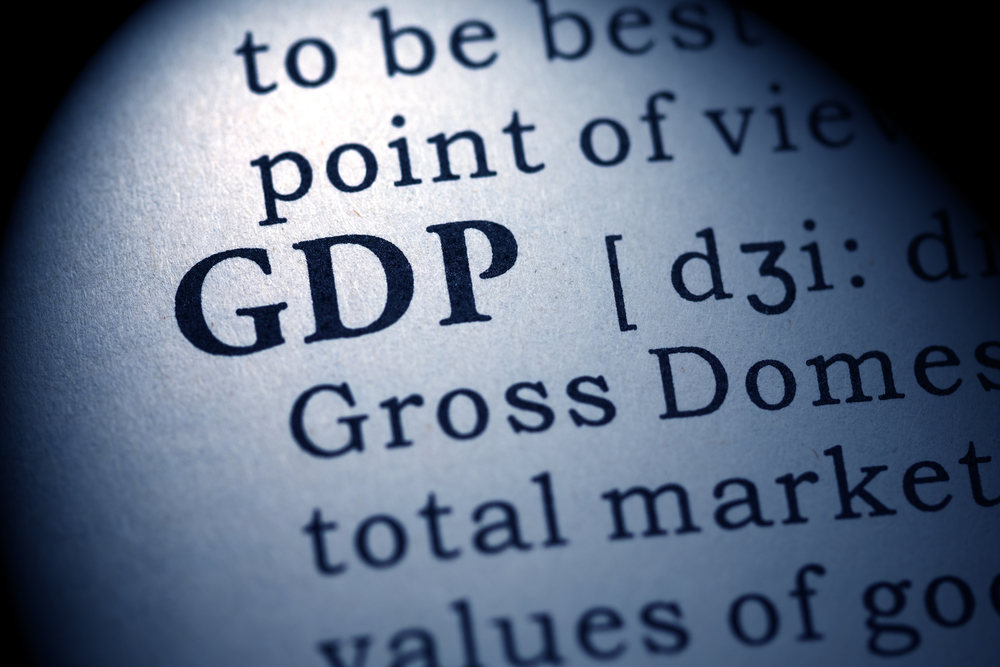GDP
Gross Domestic Product (GDP), from the Concise Encyclopedia of Economics
Gross domestic product, the official measure of total output of goods and services in the U.S. economy, represents the capstone and grand summary of the world’s best system of economic statistics….
For the United States, GDP replaces gross national product (GNP) as the main measure of production. GDP measures the output of all labor and capital within the U.S. geographical boundary regardless of the residence of that labor or owner of capital. GNP measures the output supplied by residents of the United States regardless of where they live and work or where they own capital. Conceptually, the GDP measure emphasizes production in the United States, while GNP emphasizes U.S. income resulting from production.
What is Gross Domestic Product? at Marginal Revolution University.
What’s included in GDP? Component of GDP at Khan Academy.
GDP is one measure, but not a perfect measure, of the well-being of the citizens of a country. For example, homemaker income is not traded in markets, and so is not included in GDP. (Because stay-at-home moms are not paid salaries, there are no government records for how much output they produce for their families.) See “Pitfalls in GDP Accounting,” by Robert Murphy at Econlib. November 7, 2016.
Although the concept of GDP is useful, it has achieved unwarranted importance in modern discussions of the economy and government policy. Economists should do a better job of warning the public of the many drawbacks to its use.
U.S. Gross Domestic Product (GDP), from the U.S. National Economic Accounts. Bureau of Economic Analysis (BEA, a division of the U.S. Department of Commerce).
[Contains the latest GDP data, definitions, interactive tables for finding data from previous years and quarters, and more.]
Diane Coyle on GDP, EconTalk, April 2014.
Diane Coyle, author of GDP: A Brief but Affectionate History, talks with EconTalk host Russ Roberts about the history of GDP, its uses, and its abuses. Topics discussed include the origins of GDP in the developed countries, the challenges of measuring the service sector, the challenges of dealing with innovation and product diversity, whether GDP should be supplemented with other measures of human well-being, and the challenges of dealing with internet-based goods that produce a great deal of satisfaction but make a much smaller impact on measured economic activity.
See also the EconTalk Extra, Continuing Conversation: Diane Coyle on GDP, for follow-up classroom discussion questions.
In the News and Examples
Gapminder World, at Google.com
Interactive graphic showing correlation between GNP and life expectancy, population, phone use, and much more, by country over a period of years. Select your choice of variables, display styles, and watch the changes over time!
Is anything that raises GDP “good” for the economy? What about natural disasters? See Rosemarie Fike, “Why some people think Hurricane Harvey is good for the economy (and why they’re wrong)” at LearnLiberty.
But, say the believers in the theory that disasters can benefit the economy, these people will have to spend money replacing their lost belongings and rebuilding their damaged property. This will create new jobs and benefits — particularly to those in construction-related industries.
There are two flaws with this line of thinking…
Martha Nussbaum on Creating Capabilities and GDP, EconTalk, September 2014.
Martha Nussbaum of the University of Chicago and author of Creating Capabilities talks with EconTalk host Russ Roberts about an alternative to GDP for measuring economic performance at the national level. She is a proponent of the capabilities approach that emphasizes how easily individuals can acquire skills and use them, as well as the capability to live long and enjoy life. Nussbaum argues that government policy should focus on creating capabilities rather than allowing them to emerge through individual choices and civil society.
See also the EconTalk Extra, Continuing Conversation: Martha Nussbaum on Creating Capabilities and GDP, for follow-up classroom discussion questions.
GDP Fetishism, by David R. Henderson. Econlib, March 1, 2010.
When economics professors teach the basics of Gross Domestic Product (GDP), we usually caution our students that it is not a good measure of welfare. Unfortunately, many economists go on to give GDP far more credit than it deserves. They tend to consider fiscal and monetary policy positive if these policies increase GDP, but they often fail to ask, let alone answer, whether those same policies increase or reduce welfare. I have a term for giving GDP such a sacred a place in economists’ reasoning: GDP fetishism. If we return to some basic principles of economics, we will avoid GDP fetishism, do better economic analysis, and propose better policies.
A Little History: Primary Sources and References
First measurements of GNP: Simon Kuznets, biography from the Concise Encyclopedia of Economics
Simon Kuznets is best known for his studies of national income and its components. Prior to World War I, measures of GNP were rough guesses at best. No government agency collected data to compute GNP, and no private economic researcher did so systematically, either. Kuznets changed all that. With work that began in the thirties and stretched over decades, Kuznets computed national income back to 1869. He broke it down by industry, by final product, and by use. He also measured the distribution of income between rich and poor.
Advanced Resources
National Income Accounts, from the Concise Encyclopedia of Economics
National income accounts (NIAs) are fundamental aggregate statistics in macroeconomic analysis. The ground-breaking development of national income and systems of NIAs was one of the most far-reaching innovations in applied economics in the early twentieth century. NIAs provide a quantitative basis for choosing and assessing economic policies as well as making possible quantitative macroeconomic modeling and analysis. NIAs cannot substitute for policymakers’ judgment or allow them to evade policy decisions, but they do provide a basis for the objective statement and assessment of economic policies.

